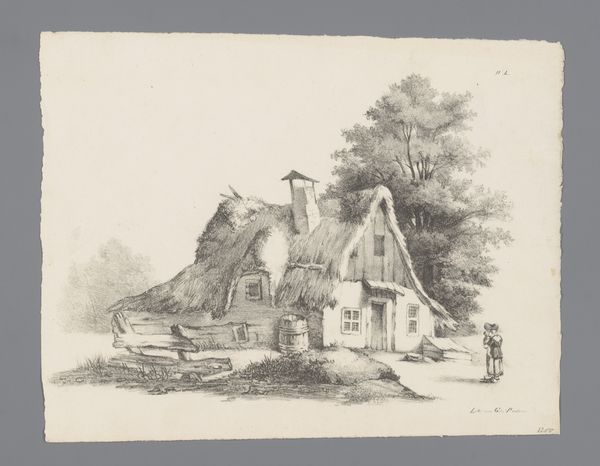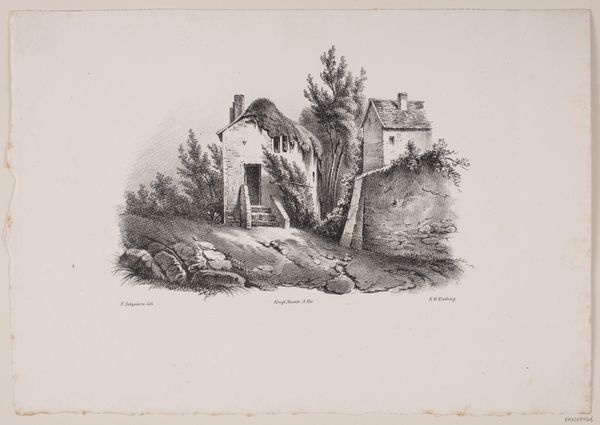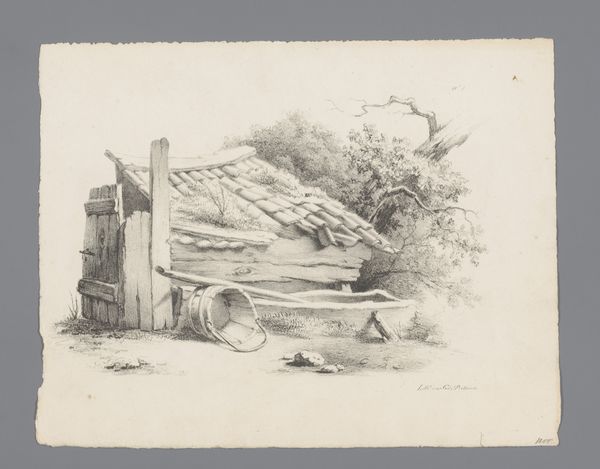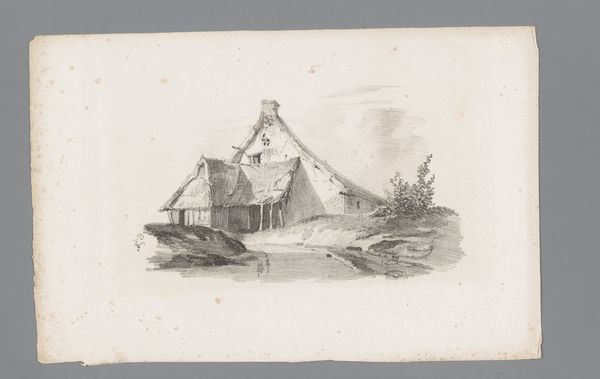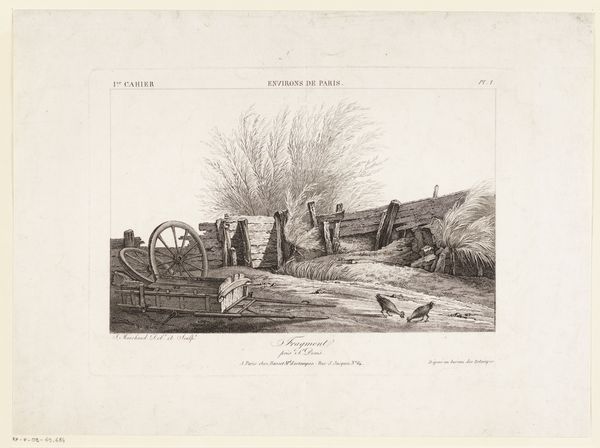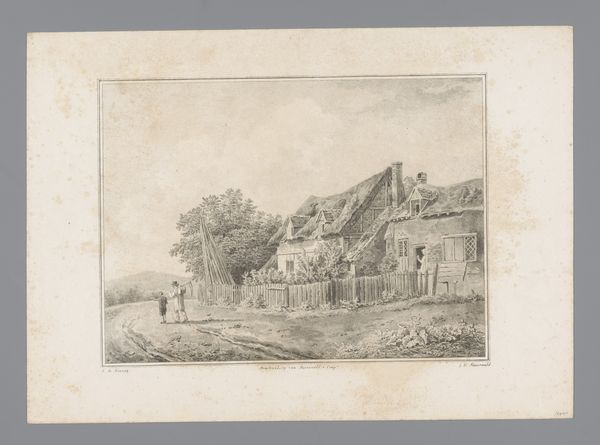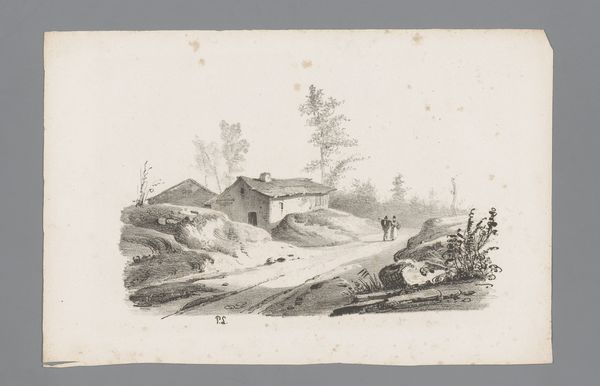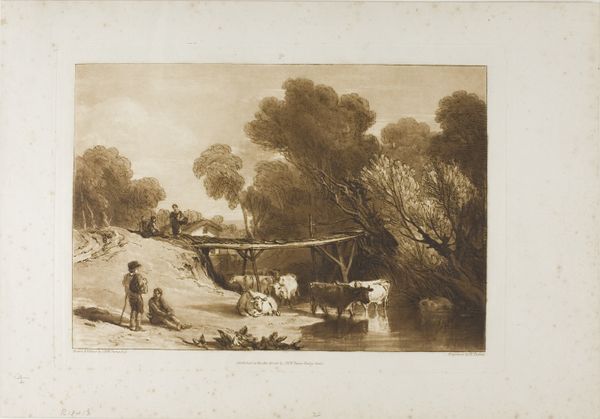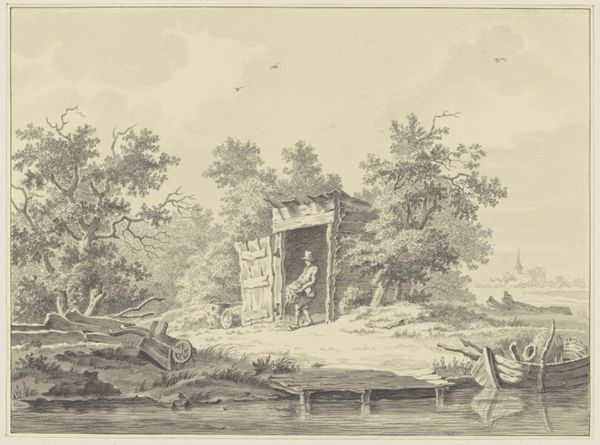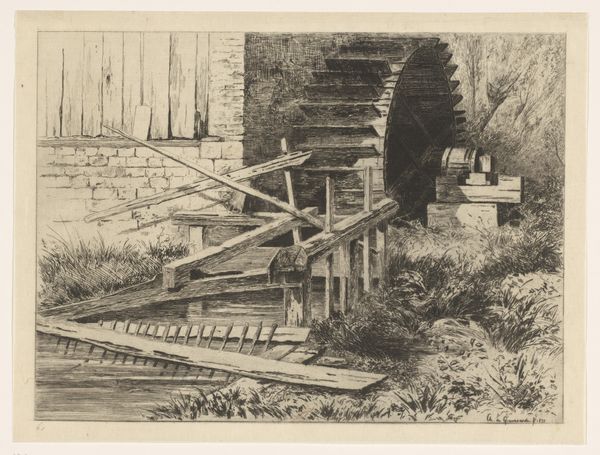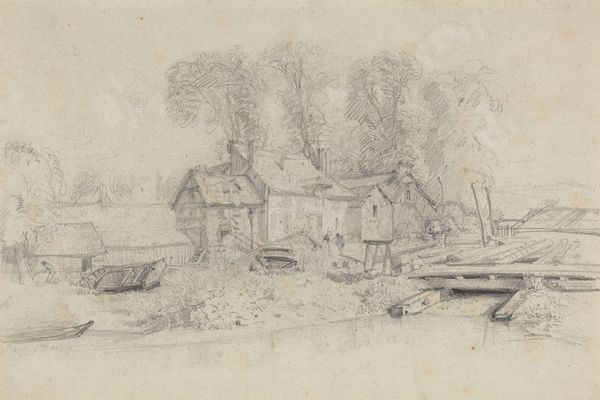
drawing, paper, pencil
#
drawing
#
landscape
#
paper
#
romanticism
#
pencil
#
genre-painting
Dimensions: height 220 mm, width 280 mm
Copyright: Rijks Museum: Open Domain
Curator: This drawing, "Boerderij en stenen brug," or "Farmhouse and Stone Bridge," created by Cornelis de Kruyff before 1828, showcases a quaint scene. It’s remarkable how much texture he achieves using only pencil on paper, don't you think? It gives a very pastoral feel. What strikes you most about it? Editor: The way he renders the thatched roof and stone bridge is pretty amazing, almost photographic in detail, though of course photography didn't exist yet. I wonder about the daily lives represented. How might a materialist approach help us interpret this work beyond its surface appearance? Curator: Good question. We can consider the means of production represented here. What can we infer about the society depicted through its built environment, say the farmhouse construction or the bridge itself? The materials—stone, thatch—speak to available resources and the skills of local labor, wouldn't you agree? And what about the social context – who likely lived and worked here, who built that bridge and for whose benefit? Editor: It’s fascinating to consider the unseen labor involved in constructing the farmhouse and bridge. The choice of materials available locally highlights resourcefulness, I suppose, reflecting perhaps the economic realities and the everyday lives of rural inhabitants. Do you think there's a subtle social commentary embedded in the choice to portray this specific scene, with the laborers perhaps meeting on their break on the bridge? Curator: Possibly, or perhaps it is simply a romantic depiction of Dutch life! But think about the availability and control of materials like paper and pencils at this time. Who had access to these tools, and what kind of societal structures allowed de Kruyff to create this image? Considering this gives a clearer understanding of both the drawing’s subject and its creation. Editor: Right, placing the artwork within the context of 19th-century material conditions certainly enhances my understanding. Curator: Indeed. We gain a richer view when we examine not just what is shown, but how and why it came to be made, in what conditions, by whom, and for what audience. Editor: Thanks for your perspective, I will certainly view landscapes with new appreciation going forward!
Comments
No comments
Be the first to comment and join the conversation on the ultimate creative platform.

